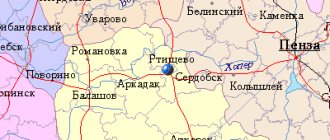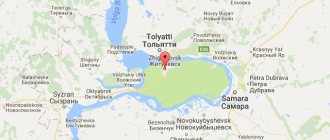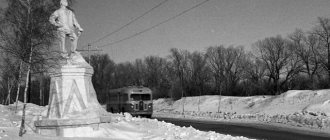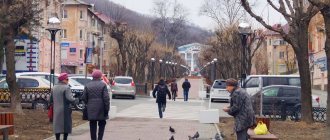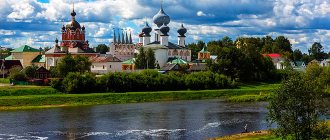This article is about territorial formation. About the city, see Sharypovo.
| Urban district | |
| Sharypovo city | |
| Flag | Coat of arms |
- (1,61 %)
City of Sharypovo
- a municipal formation and administrative-territorial unit in the Krasnoyarsk Territory of Russia.
The administrative center is the city of Sharypovo.
From the point of view of the administrative-territorial structure, the administrative-territorial unit is the regional city.[3] From the point of view of the municipal structure, it forms a municipal entity with the status of an urban district.[4][5]
Population
| Population | ||||||
| 1970[6] | 1979[6] | 1989[7] | 2002[8] | 2009[9] | 2010[10] | 2012[11] |
| 8726 | ↗9458 | ↗53 280 | ↗54 579 | ↘50 754 | ↘48 814 | ↘47 930 |
| 2013[12] | 2014[13] | 2015[14] | 2016[15] | 2017[16] | 2018[17] | 2019[18] |
| ↘47 503 | ↘46 980 | ↘46 902 | ↗46 956 | ↘46 771 | ↘46 603 | ↘46 139 |
| 2020[2] | ||||||
| ↘46 030 | ||||||
Historical reference
The confluence of two rivers, the Temra and Kadat, was the birthplace of the future city of Sharypovo. The first settlers built houses here, developed arable land and meadows. We looked closely at the nearby taiga. And this was in the eighteenth century, when peasant colonization of the territory was in full swing. This is how the village of Sharypovskoye arose. The future village of Sharypovo, and then the city of the same name.
There is no exact date for the founding of the village. It is assumed that this was the second half of the eighteenth century. Although there are dictionaries and encyclopedias that say that Sharypovo - Sharypovo was founded in 1760 . In our opinion, this date is conditional. But if you look deep into the centuries, it turns out that at the junction of the Kadat and Temra rivers people settled long before the birth of Christ. Traces of ancient history tell us this - archaeological monuments represented by settlements, burial mounds, burial grounds, and sites. They belong to the Andronovo, Samus, Tagar and other cultures. In a word, already in the second millennium BC, people lived in the place where the city of Sharypovo is located today. This has been the case for thousands of years. For the territory on which the city and the Sharypovsky municipal district are located has been a kind of “transport corridor” since the Upper Paleolithic era, which had a convenient exit from Western to Southern and Eastern Siberia. It was a kind of contact zone for forest, forest-steppe and steppe ethnocultural groups of Southern Siberia.
The Siberian archaeological expedition of the Institute of the History of Material Culture of the Russian Academy of Sciences from St. Petersburg, under the leadership of Doctor of Historical Sciences G. Maksimenkov, and then famous archaeologists E. Vadetskaya, A. Subbotin and S. Krasnienko, examined in detail the burial grounds near Lake Ashpyl, a mound on the basis of the former PMK-485 in the old, rural part of the city. According to scientists, the burial ground near Lake Ashpyl functioned for several centuries. Consequently, somewhere in the city there were ancient settlements. Subsequent economic development “hid” them for centuries. And only in the 80s of the last century, on the northwestern outskirts of Sharypov, on the first above-floodplain terrace of the right bank of the Kadat River, the first settlement was discovered. Then, on the banks of the Kadat and Temra rivers, the famous Sharypov archaeologist and paleontologist Sergei Anatolyevich Krasnolutsky discovered several more settlements. Sharypovo resident Viktor Laut was also involved in the discovery, who found a stone ax and other interesting things on his mother’s estate, on Kirov Street. There was an ancient settlement on the estate, which adjoins the left bank of the Temra. According to experts, it existed here since the eighth century BC.
There are also traces of the Middle Ages in Sharypovo. They were discovered on Prosveshcheniya Street, where apparently there was a settlement. And on the border of the city and the district, where the Holy Spring (Sharypov’s old-timers know it well) flows into the Kadat River, explorer Alexander Toropov found the workshop of a medieval craftsman. The iron master left us crucibles for melting metal, blanks for making, apparently, tips, and nearby - a treasure consisting of three pairs of stirrups - for a man's, a woman's and a child's foot. Not far from the western outskirts of the city, A. Toropov picked up plates of iron armor from the arable land, as well as a cauldron riveted from metal plates.
In short, the city, like the Sharypovsky municipal district, is rich in monuments of past history. And every year local historians of our region find new signs of distant antiquity - monuments of ancient history, ranging from mounds and settlements to sanctuaries and ore smelters, rock paintings. In total, hundreds of ancient history monuments have been registered in our area, including within the city of Sharypovo. Caucasian Andronovo tribes lived here, whose leading economy was cattle breeding. But they were also engaged in farming and hunting. The Andronovo people were replaced by the Karasuk people, and then the Tagar people - the legendary Dinlins, who already had their own statehood. At the turn of the era, the territory where our city lies was subject to the Tashtyk people, and then became part of the ancient Khakass state. It fell under the 180-year rule of the Mongol-Tatars. After the fall of the Mongol-Tatar state, it entered the possession of the Altysar principality. By the way, the summer headquarters of the princes of the Altysar principality was located on the shores of Lake Bozhy (Bolshoi), the legendary lake Ulug Tiger Gol. The legend of the Golden Valley - Altyn-Zarkh - lives in the memory of the aborigines.
In the seventeenth century, the space, the center of which was the confluence of Temra and Kadat, became one of the arenas for the struggle for possession of Khakassia. In 1604, the Tomsk fort was founded, and a few years later, expeditionary detachments of Russian servicemen passed through the Sharypovo land, deep into Khakassia. They called this territory “Kyrgyz land”, because among the main groups into which the Khakass were divided, the dominant, ruling clan was the seok “Kyrgyz”. Scientific and fiction literature has left us the names of the Altysar princes - Nomcha, Ishei, Yerenak, Korchun. Pick up the famous novel by Krasnoyarsk writer Anatoly Ivanovich Chmykhalo “Wild Blood”. The novel tells about the events of the seventeenth century in the Yenisei Siberia, including on our territory. Scientists also mention battles between Russian service units and aborigines - in 1703 in a tract on the bank of the Bazyr River (this is approximately on the opposite bank of the reservoir from the Berezovskaya State District Power Plant), in 1704 - near Lake Bely. Soon after these events, Khakassia, as well as our region, was already part of Russia. Thus ended the state colonization of this part of Siberia. Ahead was peasant, economic development of the territory. Thus, during the course of peasant colonization, the village of Sharypovskoye was born. The city, therefore, did not arise out of nowhere. This was told by the famous local historian Olga Pavlovna Arzhanykh, who was the first to publish an essay about the village of Sharypovskoye. The first, quite detailed story about the history of Sharypov.
From the stories of Olga Pavlovna: “ According to the results of research, Sharypovo arose in the second half of the eighteenth century: in 1820, when the village of Uzhur (founded in 1760) became a volost center, Sharypovo, which became part of this volost, was still listed as a village. That is, founded after Uzhur. Although, according to the book “Description of the Parishes of the Yenisei Diocese,” published in 1916, a parish was opened in Sharypovo at the end of the eighteenth century, and a stone church was built in 1817. But if there was a church in a locality, it was called a village. Meanwhile, I had to come across documents in which Sharypovo was called a village not only in 1820, but also in 1823, 1825...
»
The local newspaper “Zvezda”, published in Sharypovo, wrote in 1953 from the words of old-timers: “... in the place where Sharypovo is located, there was once a taiga, mainly dominated by pine, fir, larch... Ivan Filippovich Sharypov belongs to the indigenous inhabitants, whose age is 92 years old, as well as Helikov and Chebotarev. In memory of I.F. Sharypov, timber was taken from the site of Partizanskaya Street. In the memory of Helikov, timber was taken from the places where the Azha River flows.” Back in the late 50s and early 60s of the last century, the trunks of huge larches were dug up in a clearing where the Northern Microdistrict by a resident of Rossiyskaya Street, Grandfather Ivan Degtyarev. He sawed larches into logs and chopped shingles.
Sharypovo grew slowly. In 1829 there were 38 courtyards, 24 of them were peasant ones, ten belonged to settled yasaks, and clergy lived in four courtyards. The entire population was 294 people. Four years later, the population of the village of Sharypovskoye reached 334 people. Over the following years, from 1833 to 1859, the population increased by only 311 inhabitants. During this period, the entire population growth was mainly due to the birth rate. To some extent, the increase was observed due to settled foreigners (Khakass) - Yasashnys, who were later transferred to the category of peasants (in the village of Sharypovo, perhaps these were people with the surname Gashkov; Prosveshcheniya Street was previously called Gashkovsky Krai). The population was replenished with exiles. So, according to the verdict of the village meeting, chaired by the headman Alexei Yakovlevich Sharypov, on March 18, 1901, the Pole Franz Petrovich Romanovsky was accepted into the village society. Romanovsky was exiled to Siberia for his participation in the Polish uprising. The Lototsky family, involved in Polish events, also lived in Sharypovo.
The population of Sharypovo began to grow rapidly in the last quarter of the nineteenth century - the beginning of the twentieth century, when a stream of settlers poured into Siberia. It is no coincidence that in Sharypovo, like other old-timer villages, a street appeared called Raseysky Krai (now it is Rossiyskaya Street). By 1910, the population of the village was 1093 men and 1086 women, and there were 302 households in total. After the revolution and civil war - already 2500 people.
A significant event at the end of the nineteenth century was giving Sharypov the status of a volost center. As O.P. Arzhanykh writes, the Sharypovo people and the provincial administration repeatedly made attempts to create a volost center. And only on October 5, 1890, by order of the Yenisei governor No. 1123, Sharypovskaya volost was opened in the Achinsk district on January 10, 1891. As the newspaper “Yenisei Provincial Gazette” reported, “it included: s. Sharypovskoye (volost administration), village. Shushenskoye, s. Nikolskoye, villages Kadatskaya, Berezhinskaya, Ivanovskaya and Izyndaevskaya - from Uzhurskaya volost; Novo-Kurskaya village - from Nazarovskaya volost.” In November 1891, a new village was added to the volost - Dubinino, and at the end of 1893 - the village of Temrinskaya. Then, the volost included villages that were born later - Sorokinskaya, Edetskaya, Ashpanskya, Linevskaya, Maryevka (Maryinskaya, a village on the Uryup River).
The opening ceremony of the volost was solemn. On January 10, 1891, the Achinsk district police officer and zemstvo assessor Kocharovsky arrived in Sharypovo. At 12 o'clock the arriving guests, the volost assembly and local residents gathered in the church, where they received the priest's blessing, and with the icons they went in procession to the new building of the volost government, where the clergy held a prayer service. Then, after the speeches, the new officials were “conferred with signs of office” and given seals. Then the police officer read out the governor’s proposal on the opening of the Sharypovo volost. Yegor Volkov became the first volost foreman. He announced that the gathering had decided, in memory of the opening of the Sharypovskaya volost, to issue 300 rubles a year for the maintenance of two parish schools in the village of Sharypovskoye and the village of Nikolskoye. Over the years, the elders in the volost were Stepan Sharypov, M. Veselkov, Vasily Sukhachev.
In the village of Sharypovo itself, the executive power was represented by the village headman. So, in 1901, Alexey Yakovlevich Sharypov was elected, and the next year Mikhail Metelkin. In 1903 - Andrei Galaktionovich Kukartsev, and in 1904 - Gavriil Borisovich Metelkin. Village elders often changed due to employment in private farming.
The center of the village of Sharypovskoye was Church Square, the true decoration of which was the Trinity Church. The streets diverged from the square in rays, which bore their names from the direction to this or that village, from the location, from the one who settled on it. So, the current Partizanskaya street was called Podgornaya, Gorky - Popereshinskaya - along it there was a road to the village of Beresh, which had a second name - Poperechka. Lenin Street, having direct access to the village of Temra, was called Temrinsky Krai. But Kirova Street was divided into two parts - Kryukova and Makovka. Rossiyskaya Street has already been mentioned above. Across the Kadat River there was a street called Logunovka (now Sovetskaya). As Sharypovet resident Innokenty Mitrofanovich Rodin recalled, the street received this name because guys chose brides in Logunovo - this was the second name of the village of Novoaltatki. But there were also Zabegalovka, Slepaya, Ulus, Chebaki streets in Sharypovo...
The main attraction of the village was, of course, the Trinity Church; it was built “with the diligence of the parishioners.” It was built by a family of hereditary master masons from Yeniseisk, the Ishimtsovs. They headed construction teams. And the fact that parishioners donated their savings is demonstrated by the following example: Fyodor Maryasov, a resident of the village of Temrinskaya, donated a bell for the church.
The church became the center of the cultural and spiritual life of the Sharypovo residents. In 1885, a parish school was opened in Sharypovo. And the priests were not only spiritual shepherds, they also became the first teachers of village children. Among the first teachers are the names of the priest of the Sharypov Trinity Church Prokopiy Matveevich Popov and the deacon Vasily Treskin. Prokopiy Matveevich supported the school financially, contributing personal savings to its budget. He served in Sharypovo for only a year, but “earned the special love and gratitude of the parishioners,” and more than 70 children studied at the school where he taught. It is no coincidence that the parishioners and students of the school “expressed heartfelt gratitude to the pastor and presented an icon in a silver-gilded robe.” Let us add that the history of Sharypovsky secondary school number one began its countdown precisely with the opening of a parochial school in the village, which later became a school for peasant youth and a secondary school.
Giving the village of Sharypovo the status of a volost center played a positive role. After the formation of the volost, a paramedic station is opened in its center. The first mention of the work of doctors dates back to 1894, when, in a report to the Governor-General in Irkutsk, the head of the resettlement center in the Achinsk district reported on the replacement of negligent volost clerks with paramedics who, “like women, will have a more cordial and purer attitude towards the responsibilities they have taken on” in registration documents of immigrants, their registration. An example was given of Shishkina, a paramedic from Sharypovo. She graduated from the Krasnoyarsk paramedic school and worked in the village, apparently since the formation of the volost. The “Memorial Book for the Yenisei Province” indicates that a medical station has been operating in Sharypovo since 1897, and on November 1, 1898, a hospital with three beds for patients was opened. The Krasnoyarsk newspaper "Yenisei" notified the entire province about this event. One of the publications from the village of Sharypovo reported that the medical staff treats patients very carefully, carefully receives them in the hospital every day and provides all possible assistance. Although doctors at that time changed very often. But we know the name of one of them - in 1901, the duties of a doctor in Sharypovo were performed by the collegiate adviser Semyon Ignatievich Iof, and the next year he was replaced by A.V. Zlatorunsky. In 1903, the medical station was transferred to the village of Berezovskoye.
The village of Sharypovo began to grow and develop faster at the turn of the nineteenth and twentieth centuries. Merchant families appeared here, fairs were regularly held, a public bank was opened, and later a rural bank. A consumer society is created, the volost government is allowed to conduct postal operations. There is a small tannery and mills on the Kadate River. Five families were engaged in trade in the village. In the 90s of the nineteenth century, Demyan Kofanov and Pavel Maryasov opened their trade. A few years earlier, the owner of the mill, Alexei Zotov, was selling flour. Demyan Kofanov's son Varlam owned a large grocery and colonial goods store. Evgeny Eremeev and Lev Maryasov were also involved in trade. The tannery was owned by Vasily Lapshin.
And the influx of population has increased sharply. So, from 1907 to 1911, it grew by almost five hundred people, and reached 2179. A sign of that time, as for a number of other Siberian villages, was the sending of young men to the gold mines. The closest ones, which were located in the area of the Sarala River, and the Lensky ones. Those who were lucky returned with money to start their own household and get married. Mitrofan Sergeevich Rodin lived in Sharypovo, one of those who panned gold at the Lena mines. There he became a trade union activist, one of the victims of the execution of miners by tsarist troops in 1912. Was injured. After returning, he lived and worked in his native village. Became a beekeeper. Old-timers remember the tract where the apiary stood, it’s called the Motherland of the Apiary.
In each old-time village, the surnames of the first settlers prevailed for a long time. Sharypovo was no exception. For example, in 1892, when 187 owners insured their homes, 28 of them bore the surname Sharypovs, 27 Gashkovs, 13 Veselkovs, seven Meshkovs, Pokhabovs, Potekhins, Voroshilovs. An interesting fact is this: the Pokhabovs moved to our area from the Kem River in the Yenisei District; they are representatives of a large family of service people who explored the vast expanses of Siberia and participated in the founding of Irkutsk. The descendants of many of them still live in Sharypovo, now a city.
The revolution and the years of civil war swept through the village like a roller coaster. Rural society split into two camps. The events of the civil war and the first years after the defeat of Kolchak’s army were especially dramatic. In Sharypovo there were supporters of Soviet power, and although not tsarist power, it was old. Representatives of the first went into partisan detachments, hid in villages and neighboring villages, and a large White Guard squad was formed in Sharypovo. In 1919, Kolchak’s men killed 57 residents of Sharypov and neighboring villages. Later, they were buried in a mass grave next to the church. Now there, at the mass grave, there is a monument, on the memorial plaque it is written: “Here lie the ashes of 57 glorious partisans and residents of the village of Sharypovo, brutally killed by Kolchak’s troops in 1919.” A tragic echo of these events was the so-called “Sharypov case” of 1921, when a detachment under the command of M. Kh. Perevalov carried out a massacre of peasants, the victims of which were more than thirty people.
Soviet power came to Sharypovo in early January 1920. But outbreaks of civil war continued for several more years. In the 20s, gangs of the Rodionov brothers and Colonel Oliferov operated in the district; Sharypovo included units of the famous Ivan Solovyov. But peaceful life gradually returned to normal. The agricultural credit partnership continued to operate in the village, and the development of personal peasant farming was given impetus by the abolition of surplus appropriation and the introduction of a tax in kind. A new form of ownership appeared in Sharypovo - collective, with the formation of two communes - “Comintern” and “New World”. Another sign of the new is the holding of cleanup days. The first subbotnik in the village of Sharypovo took place on the anniversary of the October Revolution - November 7, 1920. A school for peasant youth was opened in the village. The first Komsomol members appeared. By the end of the decade, a state creamery and a cooperative molasses processing plant were operational. The communes switched to the charter of agricultural artels and became collective farms under the same names.
Sergei Andreevich Gudkov had to live and work in Sharypovo in the 30s of the last century. He left interesting memories of this period, in his opinion, interesting and eventful. In October 1931, the West Siberian Regional Council for Mobilization sent him to work at the Berezovsky School of Peasant Youth. Arriving in Berezovskoye, he learned that the building of the school and the district executive committee had burned down, and the school for peasant youth had been transferred to the largest village of the Berezovsky district, Sharypovo. This is how Sergei Andreevich ended up in Sharypovo.
From the memoirs of S. A. Gudkov: “The day after my arrival, my acquaintance with the village and school began. In the center of the village, a church building was piled on a huge square. Near it there were good houses of the priest, deacon, and elder. All the best houses were given over to schools and a hospital. The elementary school was then located in six houses, ShKM occupied eight houses for classrooms, workshops and a canteen, and in addition to that there were about twenty more houses for dormitories. Five or six houses were occupied by a hospital with an outpatient clinic and two houses by a children's technical station. A lot of empty houses and estates, even streets, were very noticeable. During the period of complete collectivization and the liquidation of the kulaks as a class, some families were taken to sparsely populated places, some abandoned their estates and fled to the mines. Everyone was accepted there back then. In 1932, collectivization in Sharypovo was completed. The “New World” commune was reorganized into an agricultural artel. Pyotr Tretyakov became the chairman of the collective farm, Ignatiy Mikhailovich Potekhin became the chief agronomist, and Krasikov became the deputy chairman. The chairman of the Komintern collective farm was Tikhon Yakovlev. During the winter of 1931-1932, work was carried out to create a new organization - a machine and tractor station. Its organizer was the 25,000-strong communist Suchkov. In 1932, the director of MTS Barkov, agronomists Lovyagin and N.A. Sushintsev arrived. About a dozen tractors also arrived. It was an event of the greatest importance."
A year later, a political department was created under MTS. Its workers are engaged not only in mass political work, but often become cultural organizers. And there was a lot of mass and cultural work. From the autumn of 1932 to April 1933, a branch of the collective farm university functioned in Sharypovo, where future specialists of collective farm production received knowledge - foremen and field workers, veterinarians and livestock specialists, bookkeepers and accountants, cooks and cheese makers, kindergarten teachers. And it was neither more nor less - almost five hundred people. Mostly young people. The Komsomol organization was also active. Its leader was Alexey Fedorovich Kolonichenko (later he worked as the first secretary of the Taimyr district committee of the CPSU).
From the memoirs of S. A. Gudkov: “Among the active Komsomol members, I will name Pyotr Rusakov, Pasha Elistratov, Kostya the Younger. Girls also joined the Komsomol. Among them are Maria Subbotina, Vera Syshchenko and others. The soul of many debates was Komsomol member, ShKM chemistry teacher Nikolai Ivanovich Mayakin (this man left a good mark on the history of public education in the Berezovsky district).”
Until 1941, the village of Sharypovo was part of the Berezovsky district. In the spring of 1941, the village became a regional center. This was preceded by the adoption of a number of documents by policymaking bodies. Thus, on July 2, 1940, a resolution was adopted by the bureau of the Krasnoyarsk regional committee of the All-Union Communist Party of Bolsheviks and the executive committee of the regional council “On the disaggregation of the Berezovsky district and the separation of the Sharypovsky district from it.” On May 13, 1941, the Decree of the Presidium of the Supreme Soviet of the RSFSR “On establishing the administrative-territorial composition of the Sharypovsky and Yartsevo districts of the Krasnoyarsk Territory” approved the decision of the executive committee of the Krasnoyarsk Regional Council of Workers' Deputies - the Sharypovsky district of the Khakass Autonomous Region was formed. In the newly created district - its regional center - authorities were formed - the organizing committee of the executive committee of the Khakass regional council for the Sharypovsky district, as well as the district committee of the All-Union Communist Party of Bolsheviks.
In Sharypovo, the formation of local government bodies was still underway when the Great Patriotic War began. It delayed the development of the regional center. But Zagotzerno appears in the village, a regional consumer society is created, a police force and a liaison office are formed, and departments of executive authorities begin to operate. The Sharypovskaya MTS, creamery, piping, cooperage and repair shops continued to operate. However, the entire life of the village was subordinated to one thing - all possible assistance to the front. The villagers worked under the motto: “Everything for the front, everything for Victory!”
With the outbreak of the war, the bulk of the men were drafted to the front. In 1942-1945, as determined by local historians from secondary school number two under the leadership of teacher N.V. Zykova, the entire male population of Sharypov reached 400 - 450 people. There were more women - up to 650. 73 percent of the total number of men were children and adolescents under seventeen years of age, and 16 percent were people over fifty years of age. That is, the main burden fell on the shoulders of women, old people and teenagers. They worked in fields and farms, and other collective farm industries. Thus, on the Komintern collective farm there was a forge, saddlery, carpentry and carpentry workshops, and a bakery, and on the New World collective farm there was a forge, a wool beater, and a wool washer. Collective farmers received the task of mandatory supplies of dried potatoes and vegetables to the army. We donated sunflower and poppy seeds. We were collecting warm clothes and linen for the Red Army soldiers. Participated in raising funds for the construction of a tank column. Institutions and enterprises at the district level had their own subsidiary farms, grew vegetables, grains, and were engaged in livestock farming. Old-timers of Sharypovo remember the Three Rakit tract (at the crossing of the railway towards the village of Shush), there was a subsidiary farm of the Sharypovo hospital, and this place was also called the Hospital Zaimka. But the main thing was work in the fields and farms. Although during the war the acreage was reduced. The same Komintern collective farm sowed spring crops on only 625 hectares. The Sharypovskaya MTS also performed its tasks, where women and older teenagers drove tractors and combines. Reports from those years list combine harvester Pyotr Yakovlev, tractor driver Motya Voroshilova, Stesha Lavtsevich and others among the best. For their selfless work, 96 Sharypovo collective farmers, as well as 317 employees of state institutions and enterprises of the region (most of them were in the regional center) were awarded the medal “For Valiant Labor in the Great Patriotic War of 1941-1945.” And Sharypovo residents celebrated Victory Day, the end of the Great Patriotic War, with a rally on the square near the church, with tears of joy, and a rifle salute...
After the war, Sharypovo, remaining a regional center, developed slowly. True, new streets were growing - former front-line soldiers started families, built houses, the logs of which were mostly bought in the surrounding villages - Sorokino, Trekhrechka, Bazyr, Andryushkina Rechka. The Sharypovskaya MTS gradually grew stronger, a communal farm, a road department, a repair and construction site appeared, motor transport units were born in the district, the Komintern and New World collective farms, as well as Glyadensky - named after Molotov, were merged into one farm. An industrial plant appeared in Sharypovo, and an incubator station was built on the outskirts of the village. In connection with the development of the Goryachegorsk nepheline deposit, the construction of the Krasnaya Sopka - Bazyr railway began. The village of Sharypovo became a base for transport builders. And on the eastern outskirts of the village there arose the Sharypovo railway station and the streets adjacent to it, where the families of railway workers lived. Truda (Fomina), Stepnaya, and Gorky streets were also upset. Zavodskaya Street appeared, on which a food processing plant of the consumer cooperation system was built. The buildings of secondary school number one and an auxiliary boarding school were being built - at that time the largest buildings in the village. The Sharypovo motor transport enterprise is growing stronger. In the area, survey work began on the construction of a state district power station; it was planned to build the city of Beloozersk. Sharypovo became the location of the Tomsk survey expedition number one of the Tomsk Institute “Teploelektroproekt” (in the fall of 1966, the expedition moved to the village of Dubinino). At the same time, work is underway on the construction of the Kiya-Shaltyrsky nepheline mine, and cargo is being flown from Sharypov to the future village of Belogorsk.
In 1962, Sharypovo was deprived of its status as a regional center and transferred to the subordination of the Uzhursky district - Khrushchev’s reforms also affected our part of Siberia. And only in the late autumn of 1965 the Sharypovsky district was created again, Sharypov returned to the status of a regional center. A mobile mechanized column No. 485 is being formed in the village, which is building housing and social infrastructure facilities in the regional center. In a short time, many residential buildings were built on Gorky, Kalinin (Rossiyskaya), Truda (Fomina) streets, Sportivnaya, Voroshilova, Titova streets appeared (now this street has become part of the Azhinsky village), Shkolny Lane. The hospital campus has been rebuilt. The dairy plant is being built within a year. The material and technical base of the Sharypovsky grain receiving enterprise and the central estate of the Beloozersky state farm, which arose on the basis of collective farms, as well as the Sharypovsky RTS, are becoming stronger. A poultry factory was opened on the state farm, which supplied up to six million chicken eggs per year to the retail chain through the Sharypovskaya procurement office. A House of Culture appeared in Sharypovo, and soon the Yubileiny cinema was built, and a House of Public Life was created. The population of Sharypovo reaches four thousand.
In the early 70s, a large construction project entered the measured life of the village with its restless character, the influx and outflow of people, the attention of the central press, and the visits of big bosses. The creation of the Kansk-Achinsk fuel and energy complex was announced. And the village of Sharypovo became his springboard. Because according to the program for the development of thermal power engineering, KATEK in the vicinity of Sharypov, it was planned to build three large thermal power plants, the first-born should be Berezovskaya GRES-1, as well as the largest coal mine in the country, the giant “Berezovsky-1”. A site was also selected for the construction of a city of miners and power engineers. The village of Sharypovo became it.
The starting point for the start of work can be called the formation of the directorates of the Berezovskaya GRES-1 under construction and for the construction of KATEK coal mines, as well as the first construction and installation teams in 1974-1975, which were supposed to go through the preparatory period stage - to create a Pioneer construction base, housing for builders . And in the spring of 1975, Viktor Strakhov’s team began installing the first dormitories (now these are the buildings of the city and district administrations, the department of social protection). This was the beginning...
Local authorities - the district party committee, the district executive committee, and the Sharypovsky village council had to resolve a lot of organizational issues in connection with the start of construction of the city and future KATEK facilities. Relations between builders and local and district authorities did not always go smoothly. Old-timers remember a long article by Vladimir Prokushev, his own correspondent for the main newspaper of the country at that time, Pravda, entitled “Alien people in Sharypovo.” The article caused a great resonance not only in Sharypovo, but also in the region. But the article helped the builders, and there were personnel changes in the authorities. The heads of customer enterprises, construction - V. A. Popkov, V. N. Ivanov did not shy away from public work; already in 1976 they were elected deputies of the Sharypovsky village council. And they helped the village authorities well. And the chairmen of the village council, and during this period they were energetic people, I. A. Kuznetsov, N. I. Astakhov, F. S. Vyunov, sought to establish partnerships with builders. The village of Sharypovo began to improve. Concrete paths appear instead of wooden sidewalks, and asphalting of Gorky Street begins. There is a bus service from the station to the Pionerny microdistrict. People like V.N. Ivanov, I.K. Shamray, V.P. Zyuzikov, V.A. Popkov, who came to Sharypovo for a long time, thought about the future of the village, then the town, and the city. Yes, for a short time Sharypovo received the status of a workers’ village. And Nikolai Nikolaevich Efimov became the first and only chairman of the council. Before that, he headed the Sharypovsky district Komsomol committee and solved the problems of creating a Komsomol organization at a construction site. It was during his tenure that the regional Komsomol committee announced a regional Komsomol shock construction project in Sharypovo, which later became the All-Union...
A new page in Sharypov’s history opened on July 31, 1981. The workers' settlement acquires the status of a city of regional subordination. The new city also includes the villages of Dubinino and Goryachegorsk. In August, the city Council of People's Deputies and its executive body, the City Executive Committee, are created, elected by the city committee of the CPSU, the city committee of people's control, and the city Komsomol committee. The first chairman of the city executive committee was Ivan Sergeevich Rudakov, and the city party committee was headed by Gennady Fedorovich Starovatov.
In the history of the city and the area in which Sharypovo is located, several stages can be distinguished: the ancient, the period of the Middle Ages, the development of the territory by Russian people, the formation and development of the village in the 19th and 20th centuries, the creation of the city and the construction of KATEK, and the newest - the beginning of the third millennium...
In accordance with the Law of the Krasnoyarsk Territory dated December 19, 2019 No. 8-3522 “On the unification of all settlements that are part of the Sharypovsky district of the Krasnoyarsk Territory, and giving the newly formed municipal entity the status of a municipal district”, municipalities located within the boundaries of the Sharypovsky district:
Berezovsky Village Council, Ivanovo Village Council, Novoaltatsky Village Council, Parninsky Village Council, Rodnikovsky Village Council, Kholmogory Village Council, Shushensky Village Council
transformed by merging into the municipal formation Sharypovsky Municipal District of the Krasnoyarsk Territory.
Sights of the city of Sharypovo
The city has preserved sights that preserve the history of the city to this day:
- Holy Trinity Cathedral is a unique monument of ancient Russian architecture. The cathedral is made of white stone and its structure is reminiscent of the Cathedral of Christ the Savior, located in Moscow. The structure of the temple is comparable to buildings erected in Rus' in the 14th century.
- Archaeological monuments - in the Sharypovsky district there are more than 200 monuments from various time periods. Thus, the remains of dinosaurs and rock writing of ancient people were found in the area.
- The winter fountain is a unique symbol of the city.
- Mountain Salanga is a ski resort located within the Sharypovsky district.
- The Holy Spring of Healer Panteleimon is a source that was illuminated in the mid-19th century.
- Sharypovo Lakes are several lakes where summer and winter recreation for tourists and local residents is realized.
Detailed information on how to get to the city’s attractions can be found using the map of Sharypovo with houses.
Sharypovo on the map of Russia: geography, nature and climate
An urban district has been formed around the city, which includes several urban settlements:
- Sharypovo.
- Dubinino.
- Goryachegorsk
The district is located on the border with the Kemerovo region, in the steppe part of the Krasnoyarsk Territory.
In Sharypovo, a climate with sharply variable weather conditions prevails. The amount of precipitation falling during the year exceeds the statistical norm for the Krasnoyarsk Territory. Thus, the most precipitation occurs in July, and March is considered the driest month. In Sharypovo, the winter period is characterized by a strong drop in temperature and frosts, the temperature drops to -25 degrees Celsius. In summer, high temperatures prevail - the air temperature warms up to + 28 degrees Celsius.
You can study the landscape and structural features of the city by referring to the map of Sharypovo from a satellite.
Routes on the map of Sharypovo. Transport infrastructure
In the urban district of Sharypovo there is a railway station - the village of Dubinino . The railway station is part of the Krasnoyarsk Railway.
The city is the center of the transport highway direction - Abakan-Kemerovo .
City transport is represented by regular passenger buses. Buses operate according to a schedule and according to certain routes (there are a total of 18 bus routes in the city).
Each bus runs at intervals of 60-120 minutes. The company operating passenger transport is Kraevoye ATP.
You can study the city's public transport routes in detail on the map of Sharypovo with streets.
Main streets of Sharypovo
There are 131 streets in the city, the main ones are:
- Central Avenue – length is 2.5 km. It has access to Rossiyskaya Street and Gorky Street. It runs along microdistricts 6, 7, 8.
- Rossiyskaya Street – the length of the street is about 10 km. It runs along the coast of the Kadat River.
- Gorky Street – the length of the street is 3.2 km. There is a hospital town on the street. The street runs along microdistricts 1 and 2.
- Lenin Street – the length of the street is 1.5 km. There are exits to Kirov, Prosveshcheniya, Fomin, Prokopchik streets.
- Severnaya Street – the length of the street is less than 1 km. It runs along Lake Ashpyr.
- Oktyabrskaya Street - the street runs along the city park. It has several intersections with Kirov, Gorky and Rossiyskaya streets.

